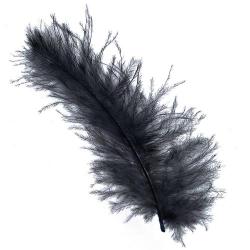Source Institutions
Source Institutions
Add to list Go to activity
Activity link broken? See if it's at the internet archive

In this physics activity, learners recreate Galileo's famous experiment, in which he dropped a heavy weight and a light weight from the top of the Leaning Tower of Pisa to show that both weights fall at the same acceleration. Learners prove that Galileo was correct by comparing how fast a feather and coin fall in a tube attached to a vacuum. Use this activity to help learners explore acceleration and terminal velocity as well as how air resistance plays a role in how fast things fall.
- 10 to 30 minutes
- 10 to 30 minutes
- Over $20 per group of students
- Ages 8 - 18
- Activity, Demonstration
- English
Quick Guide
Materials List (per group of students)
- A clear, plastic, rigid-walled tube with at least a 1 inch (2.5 cm) inner diameter and at least 3 feet (90 cm) long
- A solid rubber stopper and a one-hole rubber stopper to fit in the ends of the plastic tube
- A section of copper tubing about 4 inches (10 cm) long that fits tightly in the hole in the rubber stopper (glass tubing can be used if care is taken)
- A thick-walled flexible plastic or rubber vacuum tubing about 6 feet (180 cm) long
- A coin and a feather (or a small piece of paper)
- A vacuum pump (use a regular lab vacuum pump if available; if not, use a small hand pump such as Mityvac®).
- 2 hose clamps
- Adult help
Subjects
-
Mathematics
-
Measurement
- Rate
-
Measurement
-
Physical Sciences
-
Motion and Forces
- Gravity
- Momentum and Velocity
- Acceleration
- Newton's Laws
-
Structure and Properties of Matter
- Mass and Weight
-
Motion and Forces
-
The Nature of Science
-
The Scientific Process
- Conducting Investigations
-
The Scientific Process
Informal Categories
- Historical Reenactment
Audience
To use this activity, learners need to:
- see
Learning styles supported:
- Involves hands-on or lab activities
Other
This resource is part of:
Access Rights:
- Free access
By:
Rights:
- All rights reserved, The Exploratorium,
Funding Sources:
- National Science Foundation
- California Department of Education
- NEC Foundation of America
